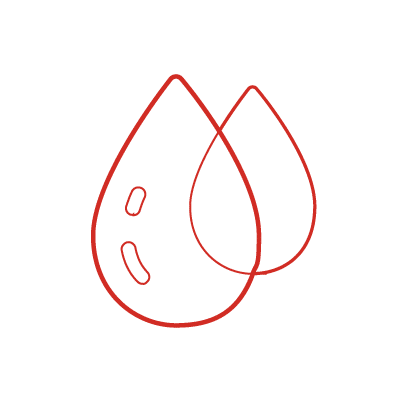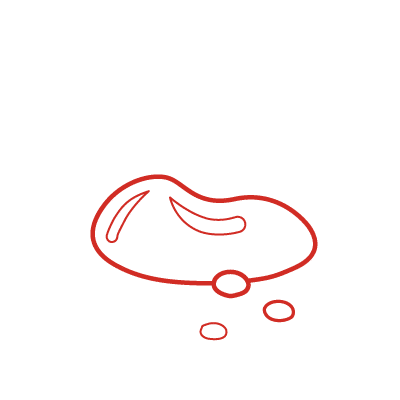From Formula to Form and Typologies
Formulation is at the heart of Encanto's Innovation across 3 main Areas of Expertise: Nutraceuticals and Dietary Supplements, developed for personal well-being, sports performance support, and the health of pets.
The creation of a dietary supplement requires a complex and rigorous process that involves several stages, from the initial formulation to the selection of the product's final form and typologies.
Here are the main stages
The first phase involves defining the formula, which includes selecting one or more active ingredients (vitamins, minerals, plant extracts, probiotics, etc.) based on the supplement’s goals (e.g., immune support, improved athletic performance, digestive well-being). In this phase, it is important to evaluate:
- The bioavailability of the nutrients, meaning the body’s ability to absorb them.
- The possible synergies or interactions between the different ingredients.
- The safety and dosage regulations that govern the industry.
Excipients are inert substances used to give the product the desired form and facilitate processing. Excipients can include binders, lubricants, fillers, or coatings. The choice of excipients depends on the final format chosen (tablets, capsules, powders, etc.).
Once the formula is developed, it is tested to ensure that the product remains stable over time, maintaining its organoleptic properties (taste, smell, color) and nutritional benefits. Stability tests are conducted, including under stress conditions (humidity, light, heat).
The form of supplement administration is chosen based on:
- Type of active ingredient
Some ingredients are more stable in liquid form, while others are more stable in powder or tablet form. - Ease of use for the consumer
Soft capsules are easier to swallow, while chewable tablets may be preferred for supplements intended for children or the elderly. - Absorption effectiveness
Liquids or powders may offer faster absorption compared to capsules or tablets.
The main forms include hard and soft capsules, tablets, granules, chewables, powders, and liquids. Each of these types offers specific advantages in terms of product stability, ease of use, and absorption speed.
Capsules
Two-piece hard capsules, ideal for containing powder or granules and for easy and…
Tablets
Made by pressing powdered ingredients. They can be coated to protect the active…
Granules
Small solid particles obtained through granulation processes. They can be dissolved in…
Chewable
Solid products, usually chewable tablets or gummy tablets, designed to be chewed before…
Powders
Dry powder formulations specifically designed to be easily mixed with liquids or…
Liquids
Solutions or suspensions of active ingredients in a liquid vehicle, which can be taken…
Pasty
Products with a soft, dense, and smooth texture, easy to spread or shape.
Gels
Formulations with a soft and gel-like consistency, created by gelling liquids with…
After formulation and choice of form, the actual production begins, which includes:
- Weighing and Mixing
Ingredients are accurately weighed and mixed to ensure even distribution of active principles. - Compression or Encapsulation
Depending on the chosen format, the mixture is compressed (tablets) or filled into capsules. - Coating
In some cases, tablets may be coated to improve taste or protect them from moisture and light.
The product is then packaged with Primary Packaging, such as Doypack, Stick Pack, Blisters, Bottles, or Sachets.
During and after production, stringent quality control checks are carried out to ensure that each batch meets safety, purity, and regulatory compliance standards.
The labeling of the supplement must include all legally required information, including ingredients, recommended doses, any warnings, and usage instructions.
The same applies to the Secondary Packaging, such as cartons and outer boxes, which must display certain mandatory indications and warnings in compliance with the specific regulations of each country where the product will be distributed.
Once the quality checks and approval are completed, the product is distributed through sales channels (pharmacies, health food stores, online) and launched on the market with marketing strategies aimed at informing consumers about its benefits and uses. This last part is typically handled by the Private Label.
Packaging Formats
Primary Packaging is the container that comes into direct contact with the product and ensures its immediate protection. Its main function is to preserve the integrity of the content and protect it from external contamination, as well as to facilitate its use by the consumer.
The first phase involves defining the formula, which includes selecting one or more active ingredients (vitamins, minerals, plant extracts, probiotics, etc.) based on the supplement’s goals (e.g., immune support, improved athletic performance, digestive well-being). In this phase, it is important to evaluate:
- The bioavailability of the nutrients, meaning the body’s ability to absorb them.
- The possible synergies or interactions between the different ingredients.
- The safety and dosage regulations that govern the industry.
Excipients are inert substances used to give the product the desired form and facilitate processing. Excipients can include binders, lubricants, fillers, or coatings. The choice of excipients depends on the final format chosen (tablets, capsules, powders, etc.).
Once the formula is developed, it is tested to ensure that the product remains stable over time, maintaining its organoleptic properties (taste, smell, color) and nutritional benefits. Stability tests are conducted, including under stress conditions (humidity, light, heat).
The form of supplement administration is chosen based on:
- Type of active ingredient
Some ingredients are more stable in liquid form, while others are more stable in powder or tablet form. - Ease of use for the consumer
Soft capsules are easier to swallow, while chewable tablets may be preferred for supplements intended for children or the elderly. - Absorption effectiveness
Liquids or powders may offer faster absorption compared to capsules or tablets.
The main forms include hard and soft capsules, tablets, granules, chewables, powders, and liquids. Each of these types offers specific advantages in terms of product stability, ease of use, and absorption speed.
Capsules
Two-piece hard capsules, ideal for containing…
Tablets
Made by pressing powdered ingredients. They can…
Granules
Small solid particles obtained through…
Chewable
Solid products, usually chewable tablets or gummy…
Powders
Dry powder formulations specifically designed to…
Liquids
Solutions or suspensions of active ingredients in…
Pasty
Products with a soft, dense, and smooth texture,…
Gels
Formulations with a soft and gel-like…
Click on one of the forms to learn more.
After formulation and choice of form, the actual production begins, which includes:
- Weighing and Mixing
Ingredients are accurately weighed and mixed to ensure even distribution of active principles. - Compression or Encapsulation
Depending on the chosen format, the mixture is compressed (tablets) or filled into capsules. - Coating
In some cases, tablets may be coated to improve taste or protect them from moisture and light.
The product is then packaged with primary packaging, such as blister packs, bottles, or sachets for sale.
During and after production, stringent quality control checks are carried out to ensure that each batch meets safety, purity, and regulatory compliance standards.
The labeling of the supplement must include all information required by law, such as ingredients, recommended dosages, warnings, and usage instructions. It is essential to ensure that the supplement complies with the specific regulations of each country where it will be distributed.
Once the quality checks and approval are completed, the product is distributed through sales channels (pharmacies, health food stores, online) and launched on the market with marketing strategies aimed at informing consumers about its benefits and uses. This last part is typically handled by the Private Label.
The first phase involves defining the formula, which includes selecting one or more active ingredients (vitamins, minerals, plant extracts, probiotics, etc.) based on the supplement’s goals (e.g., immune support, improved athletic performance, digestive well-being). In this phase, it is important to evaluate:
- The bioavailability of the nutrients, meaning the body’s ability to absorb them.
- The possible synergies or interactions between the different ingredients.
- The safety and dosage regulations that govern the industry.
Excipients are inert substances used to give the product the desired form and facilitate processing. Excipients can include binders, lubricants, fillers, or coatings. The choice of excipients depends on the final format chosen (tablets, capsules, powders, etc.).
Once the formula is developed, it is tested to ensure that the product remains stable over time, maintaining its organoleptic properties (taste, smell, color) and nutritional benefits. Stability tests are conducted, including under stress conditions (humidity, light, heat).
The form of supplement administration is chosen based on:
- Type of active ingredient
Some ingredients are more stable in liquid form, while others are more stable in powder or tablet form. - Ease of use for the consumer
Soft capsules are easier to swallow, while chewable tablets may be preferred for supplements intended for children or the elderly. - Absorption effectiveness
Liquids or powders may offer faster absorption compared to capsules or tablets.
The main forms include hard and soft capsules, tablets, granules, chewables, powders, and liquids. Each of these types offers specific advantages in terms of product stability, ease of use, and absorption speed.
Capsules
Two-piece hard capsules, ideal for containing…
Tablets
Made by pressing powdered ingredients. They can…
Granules
Small solid particles obtained through…
Chewable
Solid products, usually chewable tablets or gummy…
Powders
Dry powder formulations specifically designed to…
Liquids
Solutions or suspensions of active ingredients in…
Pasty
Products with a soft, dense, and smooth texture,…
Gels
Formulations with a soft and gel-like…
Click on one of the forms to learn more.
After formulation and choice of form, the actual production begins, which includes:
- Weighing and Mixing
Ingredients are accurately weighed and mixed to ensure even distribution of active principles. - Compression or Encapsulation
Depending on the chosen format, the mixture is compressed (tablets) or filled into capsules. - Coating
In some cases, tablets may be coated to improve taste or protect them from moisture and light.
The product is then packaged with primary packaging, such as blister packs, bottles, or sachets for sale.
During and after production, stringent quality control checks are carried out to ensure that each batch meets safety, purity, and regulatory compliance standards.
The labeling of the supplement must include all information required by law, such as ingredients, recommended dosages, warnings, and usage instructions. It is essential to ensure that the supplement complies with the specific regulations of each country where it will be distributed.
Once the quality checks and approval are completed, the product is distributed through sales channels (pharmacies, health food stores, online) and launched on the market with marketing strategies aimed at informing consumers about its benefits and uses. This last part is typically handled by the Private Label.







